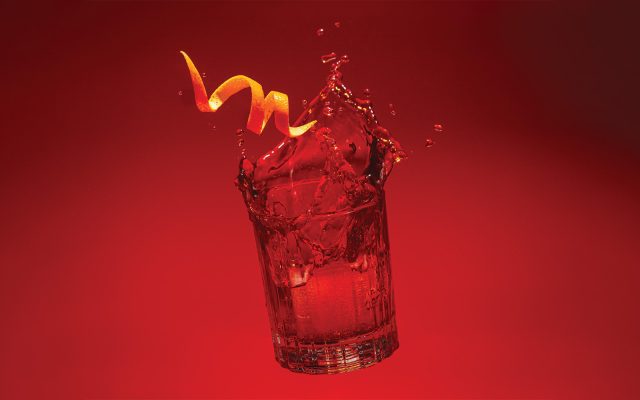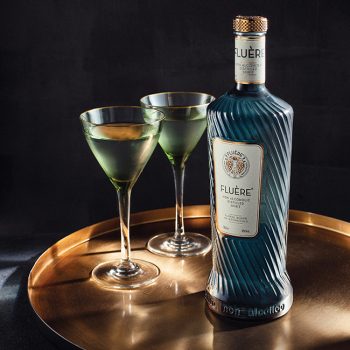Sobering thoughts: how to label low-and-no
The opportunities in the low- and no- alcohol category are growing, but so too are the obstacles. We find out more about confusing labelling rules, difficulties with localisation and what’s holding producers back.

*This feature was originally published in the October 2023 issue of The Spirits Business magazine.
In the UK, hitching your wagon to the star that is the low- and no-alcohol category, as both a consumer and producer, could be the beginning of an exciting new path. Yet, that’s not to say there won’t be a few bumps in the road – the category is currently grappling with a reputation for confusing labelling and contradictory guidance for its producers.
In August, the Wine and Spirit Trade Association (WSTA) published the first ‘comprehensive’ guidelines for the low- and no-alcohol category. The guide was made in an attempt to point the Department of Health and Social Care (DHSC) in the right direction, as this summer, it was expected to consult and make changes to its low-and-no guidance, published in 2018. However, the DHSC is six months to two years late on the consultation, according to Miles Beale, chief executive of the WSTA.
The primary challenges facing the category right now are its complex labelling rules and marketing legislation. Consumers and producers alike need clarification in order to further explore the category – a category that has the potential to thrive even more than it already has, if granted similar freedoms to international markets.
What’s in a name
The WSTA’s guide was created for three reasons, says Beale.
Firstly, for labelling rules. Currently, in describing the nature of a drink, producers are not allowed to compare the liquid to spirits like ‘vodka’ or ‘gin’, as these are defined to have a minimum strength of 37.5%. This is a challenge for those creating spirits alternatives. This aspect is “baked into the law”, according to Beale, but the guide attempts to help with this.
The labelling rules are also complex: “If you are producing a non-alcoholic product, you may never have had to deal with nutritional labelling before,” Beale explains. “Alcoholic drinks producers have never had to provide this, so non-alcoholic producers need guidance on this.”
Secondly, the guide was created to address the issue of product placement. While some products have a clear place in a supermarket aisle, low-and-no bottles haven’t quite secured their spot on the shelves yet.
In August, UK supermarket Waitrose pushed against this challenge, partnering with drinks giant Diageo to launch a dedicated low-and-no space in 253 branches.
The third and the “most key” reason that the guide was created, according to Beale, is because, by definition, a non-alcoholic drink in the UK is anything that has an ABV of less than 0.05% ABV – whereas “everywhere else in Europe and most places in the world”, it’s less than 0.5% ABV.
Laura Willoughby is co-founder of Club Soda, a global movement founded in 2014 to promote mindful drinking and alternative options to alcohol, which has a tasting room in London. She expands on this issue: “The government asks: ‘Is there any evidence that it is harmful if people drink 0.5% ABV strength alcohol?’ But it’s hard to prove something that doesn’t exist.
“But, as far as we know, there isn’t [any harm], because we put things in our mouth that are that strong in ABV anyway, from fruit to vinegars to [fermented foods].
“If the government really thought those products were harmful, they would label all of those things, wouldn’t they?”
Another issue surrounding ABV rules is the marketing in different regions. “In the UK, if you had a product that was 0.3% ABV, you’d have to treat that like an alcoholic drink,” Beale points out.
“So you couldn’t market it to, for example, a pregnant woman, whereas in every other European country, they absolutely could market it to a pregnant woman as a non-alcoholic alternative. We thought by now the government would have changed that particular rule.”
Beale also notes that non-alcoholic products can be described very differently online, depending on the website’s geographical base. “And that’s just not really helpful for a consumer. None of our members can sell more of these products unless the consumer understands them properly. We’re getting a proliferation, but they’re all described in different ways. And that’s really unhealthy.”
The global outlook
But even outside of the UK, producers and consumers aren’t finding navigating the low-and-no sector smooth sailing.

Léon Meijers is the strategic brand director of Lucas Bols-owned Fluère, a distilled non-alcoholic ‘spirit’ offered as an alternative to gin, which is based in the Netherlands.
He explains that non-alcoholic ‘spirits’ are produced with varying techniques: some are de-alcoholised, whereby a product is distilled, then removed of its alcoholic component; some are, to put it simply, “flavoured waters”; and then there are other products, like Fluère, which have undergone hydro-steam distillation – “botanicals are distilled individually, [creating] a compound, and that compound actually has an ABV,” explains Meijers. Despite these different techniques, all of these liquids ultimately fall under the same category.
Meijers believes there should be more differentiation between these options for no-and-low drinkers. A person might try out a non-alcoholic cocktail, but if it has been made using a ‘spirit’ that has been produced to “replicate an alcoholic counterpart on the nose predominantly” – which may just mean it contains flavoured water – they could find that the cocktail “becomes flat”, says Meijers.
Could defining the style of ‘spirits’ in the low-and-no sector be key to growing its consumer base?
Meijers says in the Netherlands, producers are generally “quite happy with the regulations as [they] see them today”.
“However, it would be great if some regulations were reviewed and put together to protect consumers,” he adds. “They could be paying €20 for a bottle of flavoured water. It’s a scam. Whereas [it is fair to] pay €20 for non-alcoholic distilled ‘spirits’, which [have] real decimal [alcoholic] components inside. That’s the situation we need to create.”
The category is facing challenges across the globe – but experts in the UK seem positive that the country’s labelling and ABV-based rules hold the most priority with regards to legislation changes.
Willoughby says these challenges are “stopping new people [from] producing non-alcoholic drinks, because they don’t know what to put on their label. Britain was at the leading edge globally of this new wave of alcohol-free. It’s a British success story. And the government should actually be really proud of it.”
Meijers credits Ben Branson, founder of Seedlip, for having “started” the low-and-no category – “a new category that was not existing before”. “I’ll be thankful to him for the rest of my life,” he adds.
And the challenges haven’t stopped UK producers from continuing to innovate – Scottish non-alcoholic drinks producer Spirits of Virtue recently launched a range of ‘Tequila’ alternatives, named Seven Giants, in response to the sector’s ‘rapid growth’.
“This category is flying – there’s a lot more room for it to grow and opportunity for it, both in the UK and globally,” Willoughby continues. “UK producers are leading the way.”
However, that’s not to say their current progress is not being restricted by the confusing regulations.
“It’d be a real shame for the government to basically make them continue to operate with one arm tied behind their back,” concludes Willoughby.
Meanwhile, Beale points out that being able to define UK products below 0.5% as non-alcoholic, rather than below 0.05% would make a huge difference to the sector – this is the “baseline from which this category can then grow”.
“It’s a very basic level at the moment – I don’t know how many products in the UK are produced between 0.5% and 0.05%. All of those in the UK are currently classed as alcoholic, whereas everywhere else, they’re not alcoholic.
“Well, if I’m trying to describe the difference between a low- and no-alcohol product, it’s no wonder consumers are confused. Its definition is in the wrong place – it’s not clear what the category is until that’s sorted out.”
With Fact.MR recently releasing a report estimating that the non-alcoholic ‘spirits’ sector will be worth US$271 million by 2033, it seems the category knows no bounds. Yet, the potential of low-and-no alcohol is currently limited by an array of rules and regulations, and producers continue to wait their turn for freedoms enjoyed by competing categories. With industry experts currently saying that growth is limited for the extremely successful sector, if granted these freedoms, low-and-no’s potential for further success seems unimaginable.
Related news
Top 10 spirits launches in June
